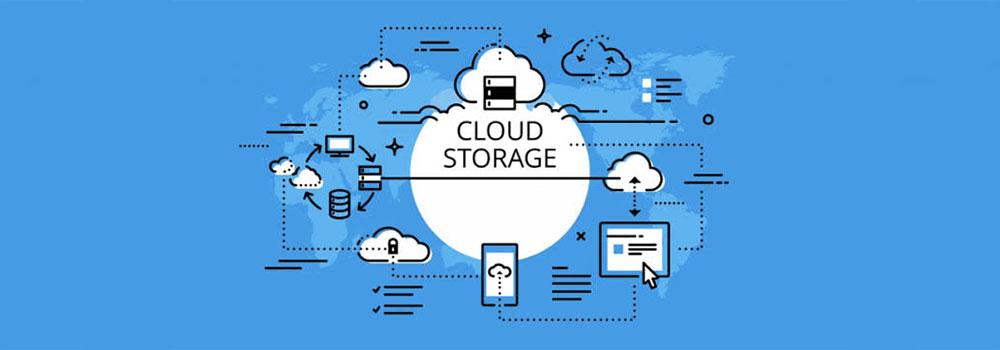Soon, JoMo Mail users will be able to use Cloud Storage. You might be wondering what exactly Cloud Storage means, how it works, why we’re incorporating it with JoMo, and what benefits it brings to you. Lets talk about that.

Cloud Storage
What is Cloud Storage?
Cloud Storage, part of the cloud computing family, is a way to cluster servers in large data centres. These servers are web accessible and work on a redundancy model, meaning disasters do not result in data loss. When a server goes offline, data is still preserved on another part of the cluster. The main advantage is that these data centres will sport better availability and security that local data storage can offer.
Traditional storage solutions are useful for data that must be immediately accessed by your system, and cloud storage (at least for consumers) does not change that. What it gives users is a web-accessible way to keep a large amount of data in a safe environment. It also offers users the ability to backup important data onto a safe storage location with minimal risk of data loss.
Due to being web-accessible data storage it can be used from anywhere in the globe, regardless of device, too. If you’d like to upload your holiday pictures from your phone, and have them accessed from your computer at home, you can do that with minimal effort. Having all data in a centralized location also helps greatly with sustainability. JoMo’s goal is to have these servers on 100% renewable energy, not only reducing our carbon footprint, but also helping reduce yours.
How does it work?
From a server side of things, we use RAID storage to provide fault protection and increase file transfer performance. What does RAID mean? It stands for Redundant Array of Independent Disks. There are different levels to it, but we’re using RAID 5+1. In the simplest of ways, RAID allows servers to create redundancy in a cluster of hard drives/SSDs when it comes to hardware failure.
What it means for data stored in the cloud is that it can have a near 100% uptime when it comes to doing maintenance or disk drive failure, as we’d be able to simply replace that drive with no downtime.
The 5 stands for the RAID level – in this case, RAID 5 uses distributed parity, with a minimum of 3 hard drives, so if one fails the rest can rebuild data back onto a replacement drive. +1 means that we’d have an additional drive in the background ready to instantly replace a failing hard drive instead of having two parity blocks, which could add performance penalties.
From a user perspective, it’s not much different from accessing your emails. You’d login through a web portal, and all your data would be accessible in a dedicated environment. We’re currently working on building our Nextcloud integration, which will give users an easy to use platform for cloud storage.
Nextcloud Integration
Nextcloud is an open-source, self-hosted platform which allows companies to create a variety of interesting collaboration environments. We currently use Nextcloud as a collaboration space for the company, so we can verify it’s usefulness. What helped us choose it as our cloud storage platform was it’s File system. With it, we can quickly create new, isolated users, who are able to use a dedicated amount of disk space as cloud storage.
Nextcloud is a web-based app, allowing you to connect to it easily, and from anywhere. With Nextcloud’s mobile app, for example, you can automatically upload your pictures to the cloud. Additionally, it boasts powerful encryption and rule-based access control, meaning nobody else can see or access your files. An in-app file editor lets you make quick changes to Word Documents, Excel sheets, and more. In the immediate future we aim to introduce Files for Nextcloud to our users, but Nextcloud opens the gate for a more interesting and varied feature-set further down the line.
What’s Next
Our most immediate task is to get Nextcloud to our users by the end of May. With that done, we can start planning out new features. We’d also like to expand our Nextcloud offering with new modules. Finally, once Cloud Storage is done we can start on enhancing user experience. This will include a host of changes, from renewals, to 2FA, and additional functionality on current modules. Not to mention, a cleaner user experience all around.

0 Comments